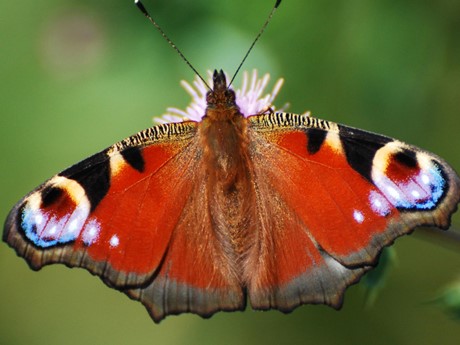GUEST BLOG by Joe Shute, author of Forecast: A Diary of the Lost Seasons
Joe Shute, 08/09/2021
We look at trees differently in autumn. While there is a long-established dataset for observations on the first buds to burst and trees to come into leaf each spring, determining exactly when autumn has befallen us is a rather more complicated affair.
In fact, such is the relative dearth of records for autumn phenology (the branch – pardon the pun – of science which maps the timings of seasonal cycles in nature) that it is sometimes referred to as the ‘neglected season’.
And yet as an avowed weather watcher, autumn is my absolute favourite time of year. As the first yellows and greens slowly seep through the woodland canopy, fruits ripen in the hedgerows and nights close in deeper and faster as if cloaked in a velvet shroud, it is a season that fills me with a delicious thrill.
Autumn provides a curious sense of melancholy and anticipation all at the same time. Here are some of the things to look out for, and how our changing climate is influencing the passage of the season:

The colour changing spectacle of sycamore trees make them a autumn favourite (Photo: Ben Lee)
Leaf tinting
This year the Woodland Trust’s Nature’s Calendar project – which oversees the largest phenological dataset in the UK with millions of observations dating back nearly 300 years – received its first records of autumn tinting of silver birch trees in mid-summer, although this is thought to be because the trees are particularly susceptible to dry periods. From late August look out for the first tinting in species such as beech, elder, rowan and horse chestnut. By the middle of September signs of full tinting will be evident in most species.
One interesting exception to this is the alder tree which is able to shed its leaves while still largely green. One theory is that the tree does not need to store up chlorophyll (the green pigment in leaves) and so has no need to leech the colour out before leaves fall.

Silver birch look stunning in full tint (Photo: Bob Gibbons)
Autumn fruiting
Delicious blackberries can be picked on some brambles as early as July (depending on where in the country you are) although generally the season peaks around late August. Come September haws, damsons, sloes and hazelnuts are ripening. For centuries Holy Cross Day on September 14 has been celebrated as the perfect time to go 'nutting' for sweet chestnuts.

The ripening of a blackthorn shrub's sloe berries is much awaited for gin making in autumn (Photo: Ben Lee)
Weather patterns
But (and this is a big but) the exact timings of autumn, along with every other season, are heavily influenced by the weather in any given year. And as our climate continues to warm, the passage of autumn is proving increasingly hard to predict. Some studies have shown that the earlier spring arrives the earlier autumn leaves begin to fall. However if spring was delayed and it is a warm autumn then leaves may cling on for longer. Typically every 1C increase to average temperatures in October will delay leaf-fall by two to three days.

Pedunculate oak leaves begin falling mid to late September (Photo: Ben Lee)
Bare trees
Autumn ends with something phenologists call ‘bare tree events’ – the final moment when the last leaves have drifted down to molder upon the woodland floor. Generally this will occur around November although again this is changing with the weather. According to the latest annual State of the UK Climate report (which this year featured a phenological chapter for the first time) last year four common trees and shrubs (elder, hawthorn, silver birch and oak) all recorded bare tree events about four days earlier than the 1999-2020 baseline.
Forecast: A Diary of the Lost Seasons by Joe Shute is published by Bloomsbury Wildlife and out now

'Bare' beech trees can be recorded on Nature's Calendar (Photo: Ben Lee)

